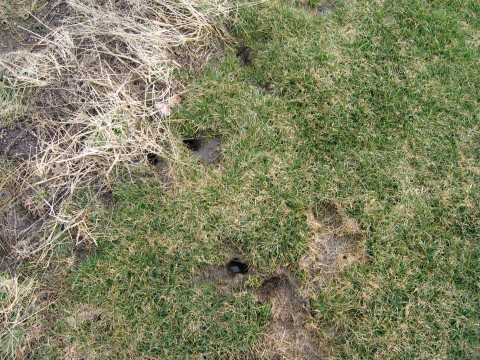Comprehensive Guide to Efficient Vole Parasite Control: Infestation Identification and Treatment Methods
In the world of efficient pest control, vole problems pose a special difficulty that requires a strategic approach. These small rats, usually mistaken for mice, can create mayhem on yards, yards, and plants if left uncontrolled. Determining the signs of vole presence and executing targeted therapy approaches are necessary elements of a successful bug monitoring plan. By discovering the nuances of vole behavior, comprehending key signs of problem, and evaluating a range of control options, one can establish an extensive approach to fight these elusive pests.
Comprehending Vole Behavior
Vole actions is characterized by their burrowing behaviors and rapid reproduction prices, making them a challenging insect to manage properly. These little rats normally create intricate passage systems underground, utilizing them for sanctuary, food storage, and transport. Voles are herbivores, taking in a variety of plants, bulbs, yards, and roots, which can create considerable damages to gardens, orchards, and lawns. Their fast reproductive price more complicates control efforts, with females efficient in creating multiple trashes in a single year, each including a number of spawn.
Understanding vole behavior is important for effective parasite control techniques. By identifying their burrow areas, monitoring feeding locations, and applying targeted control methods, such as capturing or habitat modification, vole invasions can be taken care of successfully.
Indications of Vole Problem
.2403200956550.jpg)
Prevention Methods
Executing effective prevention approaches is important in reducing vole invasions and guarding plant life from their destructive feeding habits. To stop vole infestations, it is crucial to begin by eliminating potential food sources and shelter.
Routinely evaluating the building for indicators of vole task, such as runways and delve openings, is crucial for early detection and timely action. If vole activity is presumed, consider utilizing repellents or catches tactically positioned near their paths.
Non-Lethal Control Techniques
To successfully handle vole populaces while focusing on humane techniques, non-lethal control methods offer useful solutions for reducing vole damages in landscapes and gardens. These obstacles can be buried at the very least 12 inches deep and bent at a 90-degree angle to try this out protect against voles from burrowing beneath.

Lethal Control Options
One efficient technique for attending to vole invasions in gardens and landscapes entails the strategic usage of deadly control options. When faced with a severe vole infestation that non-lethal methods have actually fallen short to consist of, implementing deadly control procedures becomes vital. Overall, when using dangerous control choices, it is vital to do so properly and in conformity with regional regulations to successfully take care of vole invasions.
Verdict
To conclude, effective vole insect control calls for a detailed understanding of vole behavior, identification of signs of infestation, implementation of avoidance methods, and application of both dangerous and non-lethal control techniques. By combining these strategies, people can effectively take care site web of vole populaces and secure their building from damage. It is important to address vole invasions quickly to protect against more concerns and minimize the influence on the surrounding environment.
Given the elaborate tunnel systems and fast reproduction rates particular of voles, recognizing the indicators of vole infestation becomes important in effective insect control. One of the key indications of vole existence is the visibility of surface paths or tracks in grass or snow, generally about 1-2 inches broad, produced as voles travel between their burrows and food sources.To efficiently take care of vole populaces while focusing on humane techniques, non-lethal control approaches supply functional services for reducing vole damage in landscapes and yards.One efficient method for resolving vole problems in landscapes and gardens includes the strategic usage of dangerous control alternatives. vole pest control.In verdict, effective vole pest control needs a comprehensive understanding browse around these guys of vole habits, recognition of signs of problem, implementation of avoidance strategies, and application of both lethal and non-lethal control methods